A wrap-up of posts published on Maven’s Notebook this week …
Note to readers: Sign up for weekly email service and you will receive notification of this post on Friday mornings. Readers on daily email service can add weekly email service by updating their subscription preferences. Click here to sign up!
This week’s featured articles …
Now at the California Water Library … A Century of Delta conveyance plans
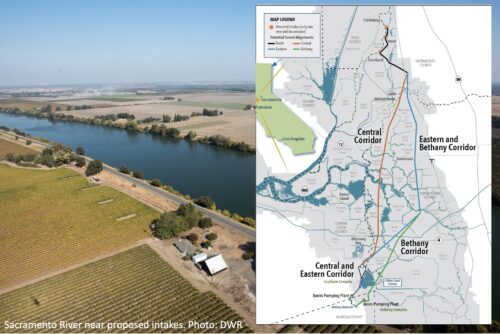 Gavin Newsom’s Delta tunnel plan is out. The debate resumes about sending Sacramento River water south to California’s largest cities and richest farms. How should we update old plumbing that is inefficient, hard on fish, and obsolescent in the era of climate change? How much water should continue to be moved? To inform the discussion, environmental historian John Hart reviews one hundred years of big plans, little plans, impassioned arguments, improvised solutions, unmet promises, changing attitudes, and ecological decline.
Gavin Newsom’s Delta tunnel plan is out. The debate resumes about sending Sacramento River water south to California’s largest cities and richest farms. How should we update old plumbing that is inefficient, hard on fish, and obsolescent in the era of climate change? How much water should continue to be moved? To inform the discussion, environmental historian John Hart reviews one hundred years of big plans, little plans, impassioned arguments, improvised solutions, unmet promises, changing attitudes, and ecological decline.
Click here to read A Century of Delta Conveyance Plans
New at Maven’s Notebook … The Basics on the Delta Conveyance Project 2022
 What is it? How will They Build it? Can they Keep the Fish Out?
What is it? How will They Build it? Can they Keep the Fish Out?
In late July, the California Department of Water Resources released an environmental impact report for construction of a 45-mile-long tunnel – or “conveyance” — that will divert high quality water from the Sacramento River, downstream of the state capital, and deliver it to pumps on the southern edge of the Delta for export. The following offers a short review of the basics behind this ambitious and complicated project. The review was produced by Estuary News Group for Maven’s Notebook, written by John Hart, Dianna Bautista, and Robin Meadows, and edited by Ariel Rubissow Okamoto.
Click here for the Delta Conveyance Project 2022 page at Maven’s Notebook.
GUEST COMMENTARY: Groundwater beneath Sacramento Valley offers hope in dry times
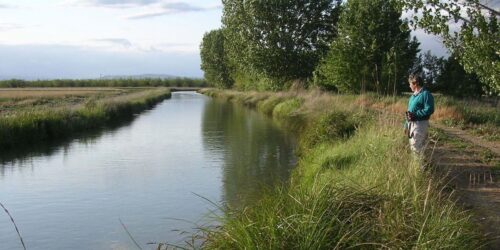
Commentary by Jim Peifer, Executive Director of the Regional Water Authority, and David Guy, President of the Northern California Water Association
As another serious drought grips California, we are again confronted with hard truths. One is this: California needs more water storage during these challenging years. This simple fact becomes clearer each year with more extreme weather—both droughts and floods. Prolonged dry periods like this are expected to become more frequent with climate change. So, we must tackle a difficult question: How to store more water in a 21st-century way with 21st-conditions?
Click here to continue reading this commentary.
GUEST COMMENTARY: California’s water debt crisis needs a long-term fix
 Commentary by Ileana Miranda, resident of San Jerardo in Monterey County and general manager of the San Jerardo Cooperative
Commentary by Ileana Miranda, resident of San Jerardo in Monterey County and general manager of the San Jerardo Cooperative
From the gas pump to the grocery store, the cost of living in California–which was already a stretch for so many families–has gone through the roof lately. As if that weren’t enough, the LA Times reported this week that rents in California could soar 10% because of inflation. This is more difficult for those of us who have to pay $115 a month for our water bill. It is a burden for those of us who see how our neighbors suffer, because they can’t afford to pay for a vital liquid and sometimes they have been cut off for non-payment. This is inhumane, California passed the Human Right 10 years ago and this is still happening.
Rates have risen so steeply that some families like mine are paying monthly more than $100 just to meet drinking, cooking, cleaning and other household needs. The million Californians living with toxic taps have to buy bottled water in addition to paying their monthly bills.
Next week, lawmakers have a chance to provide a lifeline for low-income Californians by creating a water bill assistance program similar to what the state offers for energy, cell phones and internet.
Click here to continue reading this commentary.
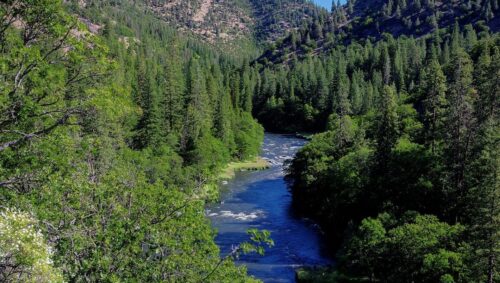 RISING VOICES: Dam Removal and the Future of Algal Blooms
RISING VOICES: Dam Removal and the Future of Algal Blooms
Return to top
In California water news this week …
Newsom unveils long-term strategy to bolster California water supply
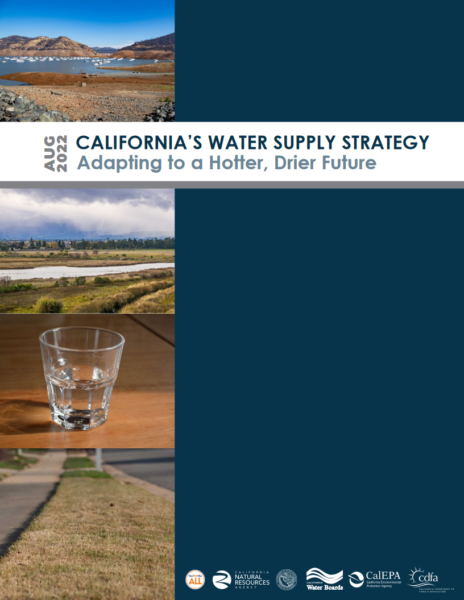 “California Gov. Gavin Newsom today unveiled a broad strategy for bolstering the state’s water supply that includes targets to recycle more water, expand reservoir storage and collect more data on the amounts farmers use. Newsom warned that new strategies are essential because California’s water supply will shrink by 10% as climate change brings warmer, drier conditions throughout the state. The plan, however, has limited details, distant deadlines and does not include a water conservation mandate. It also does not include measures to substantially address water use by agriculture, which uses about four times more water in California than people in urban areas use. … ” Read more from the Cal Matters here: Newsom unveils long-term strategy to bolster California water supply
“California Gov. Gavin Newsom today unveiled a broad strategy for bolstering the state’s water supply that includes targets to recycle more water, expand reservoir storage and collect more data on the amounts farmers use. Newsom warned that new strategies are essential because California’s water supply will shrink by 10% as climate change brings warmer, drier conditions throughout the state. The plan, however, has limited details, distant deadlines and does not include a water conservation mandate. It also does not include measures to substantially address water use by agriculture, which uses about four times more water in California than people in urban areas use. … ” Read more from the Cal Matters here: Newsom unveils long-term strategy to bolster California water supply
Newsom unveils $8 billion plan to boost water supply
““I don’t know how we’re sleeping at night,” California Governor Gavin Newsom said Thursday when he unveiled a new $8 billion water strategy plan during a visit to a desalination plant, where he talked about innovation, infrastructure and the state’s PR struggles when it comes to conservation. While drought continues to run rampant and extreme heat increases, the state could lose 10% of its water supply by 2040 unless swift action is taken. But, on par with his public rapport, Newsom didn’t hesitate to call out the Golden State’s bureaucratic red tape that impedes climate action plans. “The time to get these damn projects is ridiculous. It’s absurd. It’s reasonably comedic. In so many ways, the world we invented is, from an environmental perspective, now getting in the way of moving these projects forward so we can address the acuities of Mother Nature,” Newsom said before taking jabs at permit processes that take “years and years and years.” … ” Read more from the Courthouse News Service here: Newsom unveils $8 billion plan to boost water supply
Newsom rolls out new water plan. What’s in it?
“As California’s drought worsens, Gov. Gavin Newsom rolled out a wide-ranging plan aiming to address the state’s long-term water issues. Newsom outlined a number of objectives, including a hope to increase recycling of resources, adding millions of acre-feet of storage capacity, and tackling the state’s complicated and contentious water rights system, among other topics. At the heart of the pitch was a warning that the Golden State will see its water supplies shrink by 10 percent due to climate change. The plan, as CalMatters notes, was exceedingly light on details, “distant deadlines and does not include a water conservation mandate.” One key provision was regarding water rights. … ” Read more from the San Joaquin Valley Sun here: Newsom rolls out new water plan. What’s in it?
State, federal agencies announce new signatories to agreement to improve the health of rivers and landscapes (aka voluntary agreements)
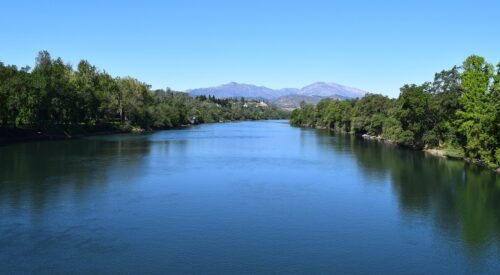 “Five more local water agencies have signed onto an agreement to provide water flows and new habitat to help improve conditions in the Sacramento-San Joaquin River Delta watershed, adding momentum to the state’s plan to adapt to a new climate reality. In March, leaders of state, federal and local agencies announced a memorandum of understanding (MOU) outlining terms for a transformational eight-year program to provide substantial new flows for the environment to help recover salmon and other native fish, create new and restored habitat for fish and wildlife, and provide significant funding for environmental improvements and water purchases. … ” Read more from the Natural Resources Agency here: State, federal agencies announce new signatories to agreement to improve the health of rivers and landscapes (aka voluntary agreements)
“Five more local water agencies have signed onto an agreement to provide water flows and new habitat to help improve conditions in the Sacramento-San Joaquin River Delta watershed, adding momentum to the state’s plan to adapt to a new climate reality. In March, leaders of state, federal and local agencies announced a memorandum of understanding (MOU) outlining terms for a transformational eight-year program to provide substantial new flows for the environment to help recover salmon and other native fish, create new and restored habitat for fish and wildlife, and provide significant funding for environmental improvements and water purchases. … ” Read more from the Natural Resources Agency here: State, federal agencies announce new signatories to agreement to improve the health of rivers and landscapes (aka voluntary agreements)
In dry California, salty water creeps into key waterways
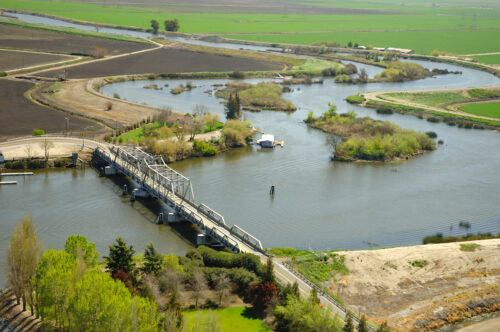 “Charlie Hamilton hasn’t irrigated his vineyards with water from the Sacramento River since early May, even though it flows just yards from his crop. Nearby to the south, the industrial Bay Area city of Antioch has supplied its people with water from the San Joaquin River for just 32 days this year, compared to roughly 128 days by this time in a wet year. They may be close by, but these two rivers, central arms of California’s water system, have become too salty to use in some places as the state’s punishing drought drags on. In dry winters like the one California just had, less fresh water flows down from the mountains into the Sacramento River, the state’s largest. That allows saltier water from Pacific Ocean tides to push further into the state’s main water hub, known as the Delta. … ” Continue reading from ABC News here: In dry California, salty water creeps into key waterways
“Charlie Hamilton hasn’t irrigated his vineyards with water from the Sacramento River since early May, even though it flows just yards from his crop. Nearby to the south, the industrial Bay Area city of Antioch has supplied its people with water from the San Joaquin River for just 32 days this year, compared to roughly 128 days by this time in a wet year. They may be close by, but these two rivers, central arms of California’s water system, have become too salty to use in some places as the state’s punishing drought drags on. In dry winters like the one California just had, less fresh water flows down from the mountains into the Sacramento River, the state’s largest. That allows saltier water from Pacific Ocean tides to push further into the state’s main water hub, known as the Delta. … ” Continue reading from ABC News here: In dry California, salty water creeps into key waterways
Dan Walters: Old issue plagues Newsom’s Delta tunnel project
“Four-plus decades ago, when a young governor named Jerry Brown, was advocating a “peripheral canal” to carry Sacramento River water around the Sacramento-San Joaquin Delta, he argued that it would not only improve water deliveries but would stop the degradation of the Delta’s water quality. The latter contention initially attracted some positive attention from environmental groups which were complaining that pulling water directly out of the Delta for shipment to San Joaquin Valley farms and Southern California’s homes had upset flows that were vital to healthy fish populations. Ultimately, however, environmentalists turned against the plan, fearing that the canal would encourage state and federal water officials to dam more Northern California rivers to meet downstate demands for water. … ” Read more from Cal Matters here: Dan Walters: Old issue plagues Newsom’s Delta tunnel project
Will Kings County be the first region sent to state’s groundwater “cop”?
 “The prospect of being sent to California’s “groundwater cop” strikes dread in the hearts of most water managers. But for John Vidovich, having the Tulare Lake subbasin come under the glare of the State Water Resources Control Board may be the only way to end an irrigation practice by the J.G. Boswell Company that he says is wasteful, abusive and contributing to the sinking of an entire town. Boswell, which has not responded to requests for comment, pumps large amounts of groundwater into massive shallow ponds for later irrigation, something Vidovich, who runs Sandridge Partners, has complained about for years. “I think this practice is going to be referred to the state Water Board,” Vidovich said in a recent interview. “I’m assuming this practice will be the focus of the state water board. … ” Read more from SJV Water here: Will Kings County be the first region sent to state’s groundwater “cop”?
“The prospect of being sent to California’s “groundwater cop” strikes dread in the hearts of most water managers. But for John Vidovich, having the Tulare Lake subbasin come under the glare of the State Water Resources Control Board may be the only way to end an irrigation practice by the J.G. Boswell Company that he says is wasteful, abusive and contributing to the sinking of an entire town. Boswell, which has not responded to requests for comment, pumps large amounts of groundwater into massive shallow ponds for later irrigation, something Vidovich, who runs Sandridge Partners, has complained about for years. “I think this practice is going to be referred to the state Water Board,” Vidovich said in a recent interview. “I’m assuming this practice will be the focus of the state water board. … ” Read more from SJV Water here: Will Kings County be the first region sent to state’s groundwater “cop”?
DWR launches new web-based mapping tool showing nearly 3,000 groundwater sustainability projects
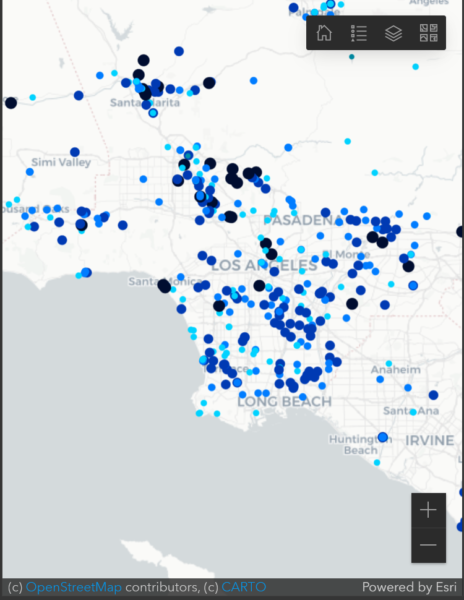 “A new web-based tool developed by the Department of Water Resources (DWR) will allow the public to explore thousands of groundwater projects across California to get a better understanding of one of the state’s most critical water supply resources. The virtual mapping tool is part of the State’s ongoing commitment to develop new, innovative solutions to provide information and resources to address the effects of California’s changing climate and ongoing severe drought. The California Groundwater Projects Tool is an interactive mapping tool that allows users to explore a database of nearly 3,000 projects initiated in California over the last decade to protect groundwater resources. … ” Read more from DWR News here: DWR launches new web-based mapping tool showing nearly 3,000 groundwater sustainability projects
“A new web-based tool developed by the Department of Water Resources (DWR) will allow the public to explore thousands of groundwater projects across California to get a better understanding of one of the state’s most critical water supply resources. The virtual mapping tool is part of the State’s ongoing commitment to develop new, innovative solutions to provide information and resources to address the effects of California’s changing climate and ongoing severe drought. The California Groundwater Projects Tool is an interactive mapping tool that allows users to explore a database of nearly 3,000 projects initiated in California over the last decade to protect groundwater resources. … ” Read more from DWR News here: DWR launches new web-based mapping tool showing nearly 3,000 groundwater sustainability projects
A battle for safe drinking water grows heated amid drought in California’s Central Valley
“Thousands of acres of crops, from corn to nectarines, surround Melynda Metheney’s community in West Goshen, California — one of the key battlegrounds where residents say irrigation and overpumping have depleted drinkable water. … In 2012, Community Water Center (CWC) told the Goshen community of about 3,300 that its water was contaminated with nitrates. Residents spent two years fighting to connect to Cal Water — the third largest regulated utility in the nation — and only some did. Some of Metheney’s West Goshen neighbors still don’t have well water. “It’s like saying, you’re not worth the money to finish it,” Metheney said. Metheney has been at the forefront of her neighborhood’s effort with CWC to negotiate another agreement with Cal Water. But people feel intimidated in agriculture-dominated Tulare County asking to be prioritized when wells run dry or get contaminated. The San Joaquin Valley is ground zero in the struggle between agriculture and communities where low-income people struggle to pay for water. … ” Read more from the Courthouse News Service here: A battle for safe drinking water grows heated amid drought in California’s Central Valley
Californians still want clean, safe water a decade after state declared it a human right
“Zenaida Montes calls the water at home “pure sickness.” Like many others who live in Fresno, she can’t drink it and regularly pays for bottled water instead. “All the water in Fresno, it’s really bad,” Montes said in Spanish. “[I have to] buy gallons of water to make food, for everything.” It’s so contaminated, she says, that it even leaves her clothes feeling dirty after a wash. Montes was one of the few dozen people who arrived in Sacramento on Thursday morning, rallying at the Capitol building to demand that lawmakers take action to ensure better access to clean water for all Californians. … ” Read more from Capital Public Radio here: Californians still want clean, safe water a decade after state declared it a human right
Water usage in California regions drops
“The California Waterboards showed a state-wide drop in water usage and some regions of the state exhibited a drop of up to 17%. The waterboard said at a statewide level in June of 2014 California residents used 131 gallons per capita daily (GPCD) compared to June of 2022 residents used 101 GPCD. In June of 2021 California residents used 112 GPCD. Kern County uses water provided by the California Water Service Company Bakersfield from the Tulare Lake hydrologic region, and the California Water Service Company Antelope Valley, which uses the South Lahontan hydrologic region, according to the waterboard. … ” Read more from Fox 5 here: Water usage in California regions drops
SEE ALSO: Interactive: How water is used in California and how conservation efforts vary, from ABC 7
Water wars in a drying California: New money vs. old power in San Joaquin Valley
“Water is the lifeblood in the parched San Joaquin Valley, sustaining endless acres of trees, seeds and pastures that feed a hungry nation. But a controversial pipeline sits empty, as dry as dust, caught in an angry feud between two of California’s largest land barons, Silicon Valley developer and farmer John Vidovich and Pasadena-based longtime cotton king J.G. Boswell Company. Vidovich needs the pipe to move water. The Boswell Company wants it blocked, saying it threatens the company’s own water supplies, which run through a canal over the pipeline’s underground route. What started as a dispute about a tube of plastic under a muddy ditch is escalating into a bitter legal fight between the two multimillion-dollar businesses, pitting old power against new money and ambition. … ” Read more from the San Jose Mercury News here: Water wars in a drying California: New money vs. old power in San Joaquin Valley | Read via United News
Valadao, McCarthy, Newhouse lead Calif. GOP in questioning review of water opinions
“U.S. House Republican Leader Kevin McCarthy (R-CA) and U.S. Rep. David Valadao (R-CA) led the California Republican delegation and Western Caucus Chairman Dan Newhouse (R-WA) in questioning why the U.S. Department of the Interior is reinitiating consultation on biological opinions for water projects in California adopted during the Trump administration. “The process appears to be a highly irregular departure from common practice, provoking many questions,” the members wrote in an Aug. 8 letter sent to Secretary of the Interior Deb Haaland. “Specifically, we are concerned that outside entities may have exerted undue influence on the decision to begin this reconsultation and on the ensuing process.” … ” Read more from the Ripon Advance here: Valadao, McCarthy, Newhouse lead Calif. GOP in questioning review of water opinions
Peter Moyle: Fish by fish, bird by bird
 “Peter Moyle is widely considered the “godfather of California fish biology.” The UC Davis professor emeritus has been conducting native fish surveys here for more than 50 years. He also played a major role in restoring Yolo County’s beloved local stream, Putah Creek. His work sounded alarm bells about native fish, including the endangered Delta smelt — a nearly extinct icon of California’s water woes. Unfortunately, the bells keep ringing: 80% of native fish have declined in the state since he first began studying them. Despite the sad fish tales, he appears to be quite happy, with a natural glint in his eye, a resting half smile on his face and a warmth that draws both fish and people to him. I sat with him on a warm winter day along the UC Davis Arboretum waterway to learn how he’s kept climate despair at bay while he’s continued, Lorax-style, to speak for the fish. … ” Read more from UC Davis here: Peter Moyle: Fish by fish, bird by bird
“Peter Moyle is widely considered the “godfather of California fish biology.” The UC Davis professor emeritus has been conducting native fish surveys here for more than 50 years. He also played a major role in restoring Yolo County’s beloved local stream, Putah Creek. His work sounded alarm bells about native fish, including the endangered Delta smelt — a nearly extinct icon of California’s water woes. Unfortunately, the bells keep ringing: 80% of native fish have declined in the state since he first began studying them. Despite the sad fish tales, he appears to be quite happy, with a natural glint in his eye, a resting half smile on his face and a warmth that draws both fish and people to him. I sat with him on a warm winter day along the UC Davis Arboretum waterway to learn how he’s kept climate despair at bay while he’s continued, Lorax-style, to speak for the fish. … ” Read more from UC Davis here: Peter Moyle: Fish by fish, bird by bird
Meet the man trying to save this ‘stupid little fish’ and see why he thinks it’s important
“The fragile little fish that swim around in dark tanks in a lab are the last hope for their kind. The lab director who oversees their care, Tien-Chieh Hung, explained that when the Delta smelt captives are young, scientists at the UC Davis Fish Conservation and Culture Laboratory put snails in the black interiors of the tanks as a slow-moving mollusk cleaning crew. The snails must do the work because the fish are so delicate, they could get tangled in a human cleaner’s arm hair and perish. The whole project of painstakingly raising these temperamental endangered creatures, Hung said, may be futile — the smelt could just keep surviving in the lab because of human intervention, and vanishing in the wild because of human intervention. … ” Read more from the Sacramento Bee here: Meet the man trying to save this ‘stupid little fish’ and see why he thinks it’s important
21,000 fish die in ‘catastrophic failure’ at UC Davis facility studying threatened species
“About 21,000 fish, including sturgeon and endangered chinook salmon, died of chlorine exposure in a “catastrophic failure” at a UC Davis research facility, university officials said Thursday. The loss was discovered Tuesday morning in an outdoor facility with multiple large tanks at the UC Davis Center for Aquatic Biology and Aquaculture, said Andy Fell, a university spokesperson. The facility is overseen by a professional staff, and the fish had been bred on-site. Rescue attempts were undertaken, but only a “handful” of fish survived, Fell said. “It’s a devastating loss for the site,” he said. … ” Read more from the LA Times here: 21,000 fish die in ‘catastrophic failure’ at UC Davis facility studying threatened species
A Burning Issue: California has lost 7% of its forest cover to climate change over the past 25 years
“Natural climate solutions (NCS), the uptake of carbon from the atmosphere by ecological processes to mitigate climate change, are a topic of intense interest. They are, for the most part, “no regrets” solutions that have additional benefits, particularly when ecosystem’s natural biodiversity and function is protected. The State of California has ambitious plans for NCS (https://resources.ca.gov/Initiatives/Expanding-Nature-Based-Solutions) but Wang et al. [2022] show that patterns of land use, drought and wildfire put these plans at risk. The team demonstrates that California lost ~7% of its forest cover with losses due to fire exceeding gains and more than balancing regrowth after fire. ... ” Read more from EOS here: A Burning Issue: California has lost 7% of its forest cover to climate change over the past 25 years
How wildfires affect snow in the American West
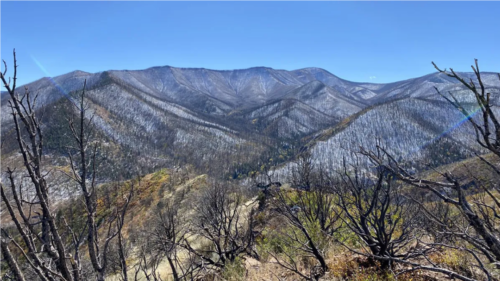 “Fresh powder does more than support winter sports. Snowmelt flows into streams, where it helps sustain agriculture, supports natural ecosystems, and provides drinking water. But wildfires are threatening snowpacks, and research on wildfire’s impact on snow water equivalent generally focuses on localized areas, with varying methods and conflicting results. Now, Giovando and Niemann set about rectifying this situation with data from the Snow Telemetry system, or SNOTEL, which uses automated sensors to measure snow depth and other aspects of weather at hundreds of sites around the western United States. The researchers compared 45 burned SNOTEL sites to similar unburned sites. They found that when burned regions were at their snowiest, they obtained, on average, 13% less water from snow than their unburned counterparts. Snow melted completely 9 days earlier in burned regions compared to unburned areas. … ” Read more from EOS here: How wildfires affect snow in the American West
“Fresh powder does more than support winter sports. Snowmelt flows into streams, where it helps sustain agriculture, supports natural ecosystems, and provides drinking water. But wildfires are threatening snowpacks, and research on wildfire’s impact on snow water equivalent generally focuses on localized areas, with varying methods and conflicting results. Now, Giovando and Niemann set about rectifying this situation with data from the Snow Telemetry system, or SNOTEL, which uses automated sensors to measure snow depth and other aspects of weather at hundreds of sites around the western United States. The researchers compared 45 burned SNOTEL sites to similar unburned sites. They found that when burned regions were at their snowiest, they obtained, on average, 13% less water from snow than their unburned counterparts. Snow melted completely 9 days earlier in burned regions compared to unburned areas. … ” Read more from EOS here: How wildfires affect snow in the American West
In commentary this week …
Editorial: Delta decision needs more alternatives, time
The Livermore Independent editorial board writes, “Last week, the California Department of Water Resources (DWR) released its 3,000-page draft Environmental Impact Report (EIR) of the Delta Conveyance Project with an October deadline to comment. That’s roughly the equivalent of reading nine books on an incredibly complex topic days before Halloween. There isn’t enough time. We need to consider the alternatives for statewide water storage before lightly skimming the material and charging forward with a possibly flawed decision. “We are too close to a water crisis to allow all energies to be directed toward what will become a mostly dry, expensive, and frequently empty tunnel, financed by water ratepayers and California taxpayers,” Barbara Barrigan-Parrilla of Restore the Delta stated. “Would a myriad of localized water projects better prepare California’s climate-changed water system?” We agree. In tandem with the Delta Conveyance Project, we need to explore smaller water projects statewide. ... ” Read more from the Livermore Independent here: Editorial: Delta decision needs more alternatives, time
The LA way: Killing a few fish in SoCal is no-no to secure water but massive fish kills in Delta are OK
Dennis Wyatt, editor of the Manteca Bulletin, writes, “Fish dying in large numbers. Crop production on farmland plummeting. Fragile ecological systems devastated or destroyed. Dust storms. Drinking water tainted. Get ready for the more destructive version of Los Angeles water grabs: Owens Valley 2.0. But instead of insatiable demand for water projects destroying a lightly populated distant valley on the eastern side of the Sierra, the trademark of Los Angeles’s complete disregard for other water basins will wreck permanent havoc on the Delta as well as Manteca, Lathrop, Tracy, Stockton, and other communities in the region. What’s not to like to make sure LA can keep growing and protect its own local environment by not turning to desalination? … ” Read more from the Manteca Bulletin here: The LA way: Killing a few fish in SoCal is no-no to secure water but massive fish kills in Delta are OK
Drought crisis demands better oversight on well-drilling
Ruth Martinez, member of the Ducor Water Board in Tulare County, and Roger Dickinson, policy director at CivicWell and one of the authors of California’s Sustainable Groundwater Management Act, write, “In 2014, state lawmakers responded to decades of sinking land across the Central Valley by regulating groundwater for the first time. The Sustainable Groundwater Management Act aimed to ensure that all water being pulled out of the earth would be replaced, and set a date of 2040 to return California’s water basins to this natural balance. But the groundwater act did not limit new wells going in, which is why a public well that supplies water to Ducor residents can be threatened by a new private well just 250 feet away. Community residents already are beginning to lose water pressure when they turn on their taps. Unfortunately, these stories are common throughout the Central Valley. Once rival corporate wells are drilled, small communities have little recourse to protect their water supply. … ” Read more from Cal Matters here: Drought crisis demands better oversight on well-drilling
AB 2201: Do we need it?
Don Wright of Water Wrights writes, “There is a saying about laws and sausages and how you really don’t want to see either being made. Looking at legislating in California makes that clear. The Sustainable Groundwater Management Act was passed in 2014. It is actually three bills; AB 1739 by then Assemblyman Roger Dickinson of Sacramento (who lost his bid to become a state senator and ended up a lobbyist), SB 1168 and SB 1319 both by then State Senator Fran Pavley of Santa Barbara. Dickinson’s Assembly District Seven is metropolitan Sacramento. Pavley’s Senate District 27 covers Simi Valley, Van Nuys and Malibu. Neither area has much in common with the San Joaquin Valley economically or hydrologically. You’ll see a trend develop as we discuss Assembly Bill 2201 by Assemblyman Steve Bennett -D, District 37, Ventura. ... ” Continue reading at Water Wrights here: AB 2201: Do we need it?
State Water Board must move faster to get needed water to disadvantaged communities
Assemblymember Joaquin Arambula writes, “The Fresno Bee Editorial Board recently published a commentary critical of the California Water Resources Control Board, prompted by the State Auditor’s report that determined the board “demonstrated a lack of urgency” to fix failing water systems — two-thirds of which are in poor, disadvantaged communities. And, most of those communities are in the Central Valley. The hard-hitting report, released by acting State Auditor Michael Tilden, brought public attention to the alarming scope of the problem regarding troubling delays in the water board’s application process. As a result, these delays prolong the time people in these communities suffer from unsafe drinking water, stretching into years in the worst cases. … ” Continue reading at the Fresno Bee here: State water board must move faster to get needed water to disadvantaged communities
Stop playing politics with water
Congressman David Valadao writes, “Water is the lifeblood of the Central Valley. With less than 1 percent of our nation’s farmland, the Central Valley supplies a quarter of our nation’s food and the majority of our nation’s fruits, nuts and vegetables. Our well-deserved reputation as America’s breadbasket comes from the help of nature and a whole lot of hard work and skill from our farmers, ranchers and producers. But without water, we can’t grow our nation’s food at all. As a result of California’s ongoing severe drought, insufficient storage of water from wet years, and unnecessary burdensome overregulation, communities throughout the Central Valley are running out of water for our daily use in homes, businesses, and agricultural production. Farmers have been left with no other choice but to fallow their fields and dry out valuable orchards due to access to little or no water. … ” Continue reading at the Bakersfield Californian here: Stop playing politics with water
For water conservation, lawmakers should okay ‘decoupling’
Roberto Barragan, the executive director of the California Community Economic Development Association, writes, “With climate change, our boom and bust cycle of rainy vs dry years will mean fewer rainy years and longer, more frequent dry years. We’ve all been doing our part to conserve water during this drought, but according to figures provided by state water regulators, it’s not enough. We urge the legislature to pass and Gov. Newsom to sign SB 1469 which offers water providers a powerful tool to help encourage customers to save water and fight the drought. SB 1469 makes permanent a program called decoupling which sounds technical but is really a very simple concept to conserve water. When water customers pay their water bill, they are paying for maintenance of our water infrastructure as well as the cost of the water. Decoupling changes the water utility business model from selling to conserving water by severing the link between water sales and everyday system operations. It eliminates an incentive for water providers to sell more water. … ” Read more from Capitol Weekly here: For water conservation, lawmakers should okay ‘decoupling’
Conservation alone won’t solve California’s water crisis. We need more infrastructure
The San Diego Union-Tribune editorial board writes, “The question persists even though it shouldn’t: Can California conserve its way out of this drought? The answer is clearly no. But then again, if water policy in California were as clear as water itself, Jake Gittes would never have been told to “forget it.” … In recognition of this and a changing climate that has implications for every Californian, Newsom has designed a plan for “a climate prone to weather whiplash,” a plan that calls for “haste” because water supply conditions are likely to both worsen and become less predictable across the West. There are many priorities at all levels of government, but expanding water infrastructure needs to stay toward the top of the list. … ” Read more from the San Diego Union-Tribune here: Conservation alone won’t solve California’s water crisis. We need more infrastructure
Drought requires new strategies for managing cropland
Andrew Ayres, a research fellow of the Public Policy Institute of California Water Policy Center, and Caitlin Peterson, the associate director of the Public Policy Institute of California Water Policy Center, writes, “The San Joaquin Valley is California’s largest agricultural region, but it’s facing an uncertain future. A combination of persistent drought and the rollout of California’s Sustainable Groundwater Management Act will increase regional water scarcity in the coming decades. Water scarcity will have a major effect on land use: At least half a million acres are projected to come out of irrigated production in the San Joaquin Valley by 2040. This raises a thorny question: What happens to all this newly fallowed land? With careful planning, research and development, and incentive programs, San Joaquin Valley residents can avoid the worst consequences of land fallowing — and perhaps even improve some environmental and economic conditions. … ” Read more from Cal Matters here: Drought requires new strategies for managing cropland
California’s Colorado River reckoning
Ed Osann, Director of National Water Use Efficiency and Water Initiatives with the NRDC, writes, “2023, and every year that follows, will be different for the seven Colorado River Basin States – and particularly for Southern California. In June, the Commissioner of the Bureau of Reclamation, operator of the massive federal dams on the Colorado River, informed the seven states of the Colorado Basin that they needed to prepare for reductions of 2 to 4 million acre-feet of Colorado River water next year, or as much as 1/3 of the amount used in a typical year. Sharply declining water levels behind both Hoover Dam and Glen Canyon Dam have raised alarms about the system’s ability to continue to supply water and power, forcing the states to consider what was previously unthinkable. The Commissioner is expected to announce more specifics in August. While each of the Basin states will face challenges, this blog focuses on California, which has never had to contend with a curtailment of its original apportioned share of the Colorado. … ” Continue reading at the NRDC here: California’s Colorado River reckoning
In regional water news this week …
Lake Tahoe likely to fall below natural rim by mid-October
“Chief Deputy Water Master Dave Wathen provided an update on the state of the region’s water supplies during this week’s First Tuesday Breakfast Club forum hosted by the North Lake Tahoe Chamber of Commerce. The amount of water in Lake Tahoe will likely drop below the natural rim sometime in mid October, according to Wathen. The lake’s elevation on Thursday was 6,224.01, which is similar to this time last year before a historic amount of precipitation fell in October. The lake’s natural rim elevation is 6,223 feet. A record 9.86 inches of precipitation, most of which was rain, was recorded in Tahoe City last October. The region was then hit with a December that was 226% of the average amount of precipitation with Tahoe City recording 12.69 inches. April brought another above average month with 4.36 inches of precipitation. … ” Read more from the Tahoe Daily Tribune here: Lake Tahoe likely to fall below natural rim by mid-October
New Russian River curtailments imposed as Sonoma County officials warn of worsening drought
“Several hundred ranchers, grape growers, tribes, landowners and community water suppliers, including the city of Healdsburg, were barred Friday from exercising some of their rights to water from the Russian River amid tightening supplies in an unrelenting drought officials say is likely to get worse. The third round of curtailments imposed by the State Water Resource Control Board was prompted by drastic reductions in Eel River water diversions, which are critical to boosting diminishing storage in Lake Mendocino, which in turn feeds the Russian River. The water board also formally suspended a new voluntary sharing arrangement that allowed some of those with older, “senior” water rights to share water with those whose rights have been curtailed. According to state water officials, there is no longer enough water available to make the system work. ... ” Read more from the Santa Rosa Press Democrat here: New Russian River curtailments imposed as Sonoma County officials warn of worsening drought
Sonoma County Board of Supervisors calls for more study of revised well rules
“The Sonoma County Board of Supervisors put off adopting changes to the county’s well regulations on Tuesday, citing the need for additional analysis and more public outreach. County planning staff presented supervisors with revisions aimed at bringing the county’s well ordinance in line with California’s Public Trust Doctrine, a legal policy mandating local government protect certain waterways for public uses, including commerce, recreation, navigation and habitat. … ” Read more from the Santa Rosa Press Democrat here: Sonoma County Board of Supervisors calls for more study of revised well rules
Desalination plant construction underway in Antioch as drought worsens
“The city of Antioch sits right next to the largest source of fresh water in Northern California. But it’s facing a water supply crisis because of changes to the Delta, both natural and man-made. As a result, the city is taking extraordinary measures to increase supply in a way that has the rest of the state watching. … But while the state may be praying for rain, Antioch doesn’t see the situation improving anytime soon. So, they’re doing what a lot of other cities have only pondered–they’re building the first surface-water desalination plant in the Bay Area. … ” Read more from CBS News here: Desalination plant construction underway in Antioch as drought worsens
In a coastal California town, three iconic smokestacks are coming down. A community mourns
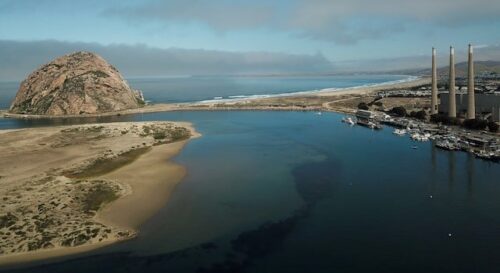 “In this foggy Central Coast fishing town, two icons tower above everything. One is Morro Rock, the 23-million-year-old plug of an ancient volcano, rising 576 feet out of the sea. The other is a trident of 450-foot concrete smokestacks, built half a century ago for a seaside power plant. Together, they give Morro Bay its nickname: Three Stacks and a Rock. Outsiders may see the humble smokestacks as industrial blight. But here, they became a cherished symbol of the town’s working-class ethos. … But times change. The planet warmed. The power plant became a relic in an era when California is moving toward renewable energy. It shut down eight years ago, and it’s not coming back. Soon, the smokestacks will come down. Many in the town are heartbroken. … ” Read more from the LA Times here: In a coastal California town, three iconic smokestacks are coming down. A community mourns
“In this foggy Central Coast fishing town, two icons tower above everything. One is Morro Rock, the 23-million-year-old plug of an ancient volcano, rising 576 feet out of the sea. The other is a trident of 450-foot concrete smokestacks, built half a century ago for a seaside power plant. Together, they give Morro Bay its nickname: Three Stacks and a Rock. Outsiders may see the humble smokestacks as industrial blight. But here, they became a cherished symbol of the town’s working-class ethos. … But times change. The planet warmed. The power plant became a relic in an era when California is moving toward renewable energy. It shut down eight years ago, and it’s not coming back. Soon, the smokestacks will come down. Many in the town are heartbroken. … ” Read more from the LA Times here: In a coastal California town, three iconic smokestacks are coming down. A community mourns
Tensions high at Cal Am community meeting
“No doubt many of the 80 to 100 people who attended California American Water Co.’s community meeting in Marina Tuesday night could feel the tension before even setting foot in the California State University Monterey Bay’s student union ballroom. Chants of “No Cal Am, save our water,” could be heard from the parking lot, as around 50 people representing or supporting the grassroots organization, Citizens for Just Water, protested outside the building before the meeting started. Tensions were equally high inside, as residents shouted over Cal Am representatives, criticizing them and the proposed desalination project. But despite the agitation, Cal Am’s Manager of External Affairs Josh Stratton said the public’s vocal frustration was exactly what the organization was expecting when they decided to hold the forum. … ” Read more from the Monterey Herald here: Tensions high at Cal Am community meeting
L.A. residents saving more water but face bigger test as heat intensifies
“In another promising sign that residents are taking calls for conservation to heart, Angelenos in July achieved an 11% reduction in water use — more than any other July on record, officials announced this week. The report from the Los Angeles Department of Water and Power comes as drought continues to sap supplies across the region. But while July’s conservation surpassed the record 9% reduction achieved in L.A. in June, officials urged residents to keep going. “It’s clear that our customers have made conservation a way of life and are doing things like taking shorter showers, watering only on designated days of the week and taking advantage of our water conservation rebates to save water and save money,” DWP general manager and chief engineer Martin Adams said in a statement. “But our job is not done. We are now entering one of the hottest months of the summer season and ask that our customers continue to save every drop.” … ” Read more from the LA Times here: L.A. residents saving more water but face bigger test as heat intensifies
L.A. water board approves controversial agreement with Boeing over toxic site
“Despite the heated objections of neighbors and environmentalists, the Los Angeles Regional Water Quality Control Board voted unanimously Thursday to approve an agreement with Boeing Co. that seeks to ensure polluted stormwater isn’t still flowing into local creeks and the Los Angeles River after the company cleans up the notoriously toxic Santa Susana Field Laboratory. The agreement requires Boeing to monitor stormwater draining into the Calleguas Creek watershed for 195 pollutants after the company completes its cleanup of the 2,850-acre site atop a plateau in southeastern Ventura County. … ” Read more from the LA Times here: L.A. water board approves controversial agreement with Boeing over toxic site
Tainted groundwater from old Rocketdyne site has inched toward homes and LA River
“The empty 47-acre former Rocketdyne site in Warner Center, across the street from bustling Westfield Topanga mall, might be one of the largest undeveloped parcels in L.A. For years, Triple Five Group, owner of the massive Mall of America in Minnesota, tried to buy it. And L.A. City Councilman Bob Blumenfield, who represents the area, once pitched it as a home for Amazon’s headquarters. And now, with the Los Angeles Rams owners acquiring the empty Promenade mall and empty Anthem Blue Cross building, both nearby, the site may not only be one of the biggest open parcels around, but one of the most desirable pieces of land in the region. If only the property wasn’t contaminated with dangerous chemicals left by Rocketdyne that have slowly crept off the site in groundwater beneath the land. … ” Read more from the Daily News here: Tainted groundwater from old Rocketdyne site has inched toward homes and LA River
State refuses request for more water in communities with high wildfire risk
“State officials have denied a request by Southern California municipal water districts for more water to mitigate wildfire risk. The agencies had worked with the Metropolitan Water District of Southern California to ask the California Department of Water Resources to allocate 26,300 more acre-feet of water under the health-and-safety exception to drought rules, using the rationale that the exception should include supplies to reduce wildfire hazards by irrigating vegetation in high-risk areas. “Irrigation of landscaping within defensible space, as described in your request, can play a role in reducing wildfire risk,” read the July 29 response from DWR and the California Department of Forestry and Fire Protection. “However, alternative approaches for fire prevention are available that will be equally effective as supplemental deliveries, and therefore DWR is denying your request.” … ” Read more from the LA Times here: State refuses request for more water in communities with high wildfire risk
Clock ticks down on Colorado River cuts. What will feds do?
“Western states that rely on the Colorado River Basin for their water supplies face a Tuesday deadline to tell the Bureau of Reclamation how they plan to cut back during the crushing drought that has shrunk the river. But as that date nears, the consequences for failure remain a key unknown. Reclamation Commissioner Camille Touton announced in June that states in the Colorado River Basin need to propose how to conserve between 2 million and 4 million acre-feet of water before a mid-August deadline, when the agency releases its 24-month projections for water levels in lakes Powell and Mead (E&E Daily, June 15). If the seven states — Arizona, California and Nevada in the Lower Basin and Colorado, New Mexico, Utah and Wyoming in the Upper Basin — fail to do so, Biden administration officials have emphasized the threat of federal intervention. … ” Read more from E&E News here: Clock ticks down on Colorado River cuts. What will feds do?’

